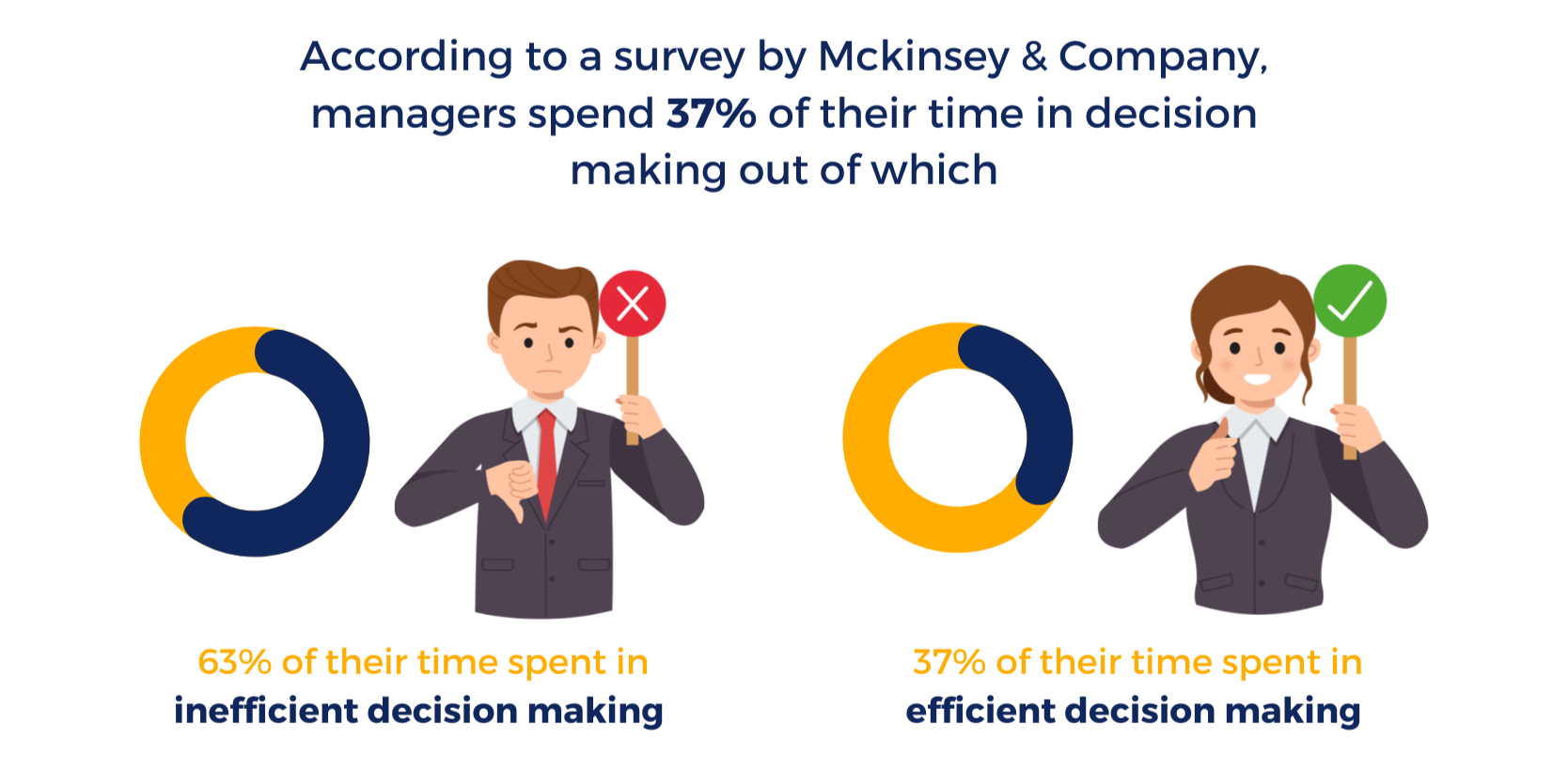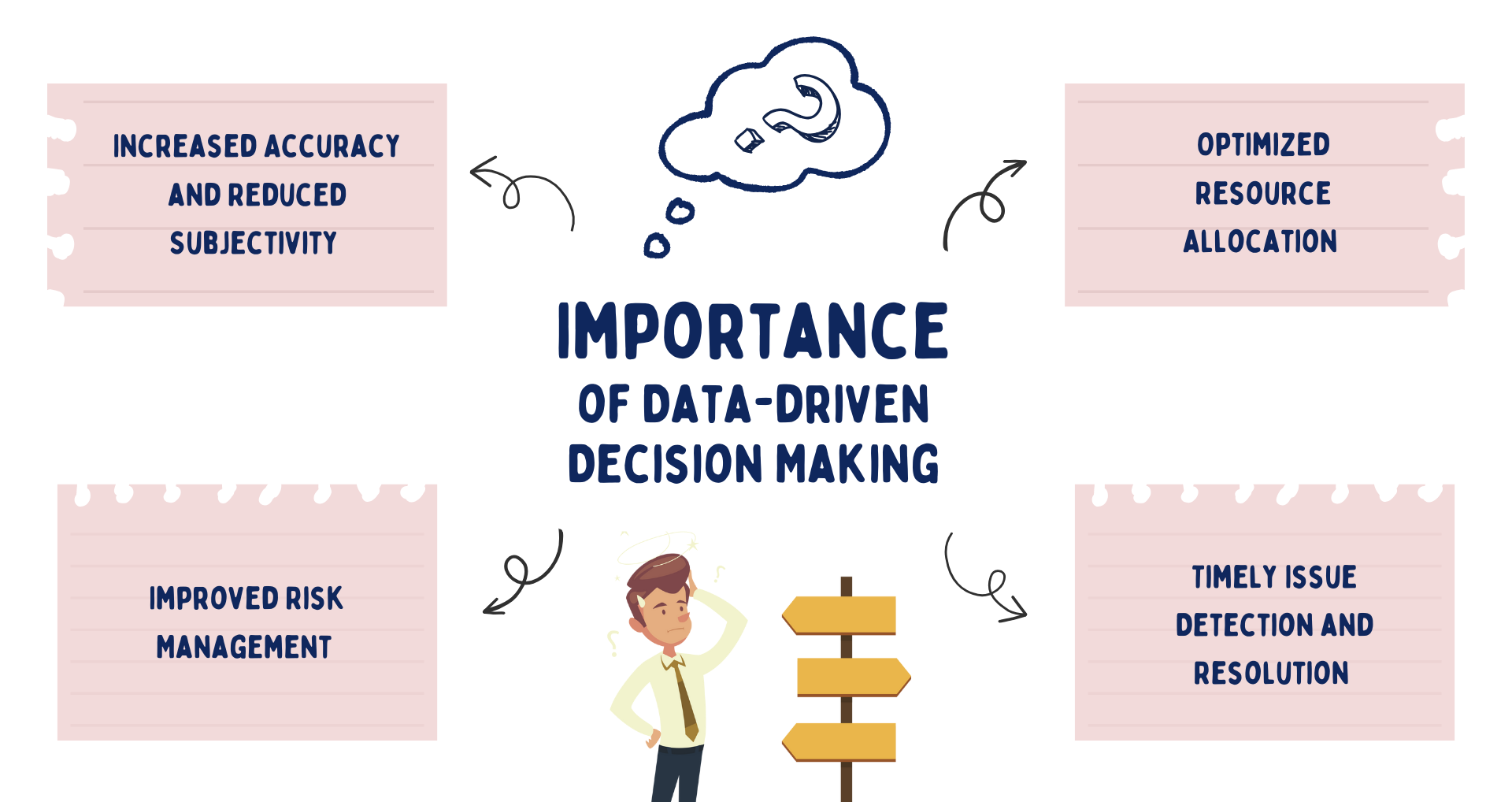Making good business decisions is a critical part of every executive’s job and is vital to every company’s well-being. Yet in a new McKinsey Global Survey most managers spend 63% of their time making inefficient decisions.
This staggering statistic highlights the urgent need for a paradigm shift in how organizations approach decision-making processes, particularly within the context of project management. Efficient decision-making is not just a desirable trait; it’s a key driver for project success.
The Cost of Inefficient Decision Making
Inefficient decision-making can be likened to a slow leak in a ship. Initially, it may not seem like a significant issue, but over time, it can sink the entire vessel. The same principle applies to businesses and projects. When decisions are made slowly or haphazardly, it can lead to a cascade of negative consequences, including missed opportunities, cost overruns, delays, and even project failure.
One of the most tangible costs of inefficient decision-making is the drain on resources. When decisions are delayed or revisited repeatedly, it consumes valuable time and human capital. This not only affects the project’s timeline but also adds unnecessary expenses, eroding profitability and competitiveness.
Role of Data-Driven Decision Making in Project Management
Efficient decision-making begins with access to the right data and information. In the digital age, data is abundant, but organizations must harness it effectively. Data-driven decision-making is not a new concept, but its importance continues to grow as businesses generate vast amounts of data every day.

To make informed decisions, project managers and executives need access to real-time data and analytics. This enables them to assess the current state of the project, identify potential issues, and make timely course corrections. Furthermore, data-driven decision-making reduces the reliance on gut instincts and subjective judgments, leading to more objective and effective choices.
Importance of Data-Driven Decision Making
Data-driven decision-making is a systematic process involving the collection, analysis, and interpretation of data to make informed decisions, as opposed to relying solely on intuition or gut feelings. There are lots of benefits to making data-driven decisions to talk about. Let’s see some of them!
Increased Accuracy and Reduced Subjectivity
You can improve the efficiency and accuracy of important decisions by basing them on data rather than personal opinions or assumptions. Objective data provides a solid foundation for making better decisions, leading to outcomes that are more accurate and reliable.
Improved Risk Management
Projects inherently entail risk and effective risk management is a crucial component of success. Data-driven decision-making empowers project managers to more accurately identify and assess risks. By leveraging historical data and predictive analytics, project managers can gauge the probability and impact of risks, facilitating the formulation of appropriate mitigation strategies.
Optimized Resource Allocation
Resource optimization is a key responsibility in project management. Analyzing data related to resource availability and performance empowers project managers to make well-informed decisions regarding resource allocation for specific tasks. This, in turn, enhances overall project efficiency.
Timely Issue Detection and Resolution
Every project is bound to encounter unforeseen challenges or obstacles that can disrupt schedules and outcomes. Through data-driven decision-making, one can monitor key performance indicators and metrics in real-time, facilitating the swift resolution of issues as they arise.
Valuable Decision-Making Techniques
Effective decision-making is integral to the success of any project within the realm of project management. It involves a meticulous evaluation of options and the selection of the optimal solution for the project. There are several decision-making models in project management that can be used to help make effective decisions.
- Identification and evaluation of options
One commonly employed project management decision-making technique involves identifying and evaluating options. Faced with a decision, it is imperative to assess all available alternatives and consider their potential impacts on the project.
This decision-making process helps managers pinpoint the best option for their project and make informed decisions.
- Brainstorming
Another valuable decision-making technique is brainstorming. Project managers can employ brainstorming to generate ideas and solutions to challenges. It encourages creativity and offers diverse perspectives on an issue, aiding in the identification of the most suitable solution and decision-making.
- Risk Analysis
Risk analysis is a third decision-making technique. Project managers must consider potential risks when making decisions. Risk analysis entails evaluating the risks associated with each option and making informed decisions based on the potential risks and rewards. This approach ensures that decisions align with the project’s best interests.
- Data and analytics
The fourth decision-making technique involves the utilization of data and analytics. Data-driven decision making in project management is indispensable. Project managers can harness data and analytics to make data-driven decisions.
This allows project managers to make decisions based on facts, rather than on instinct or opinion. Decision-making in software project management allows project managers to make more informed decisions, which can result in better outcomes for the project. Employing project analytics software like Khoji for Agile can significantly enhance this process.
Khoji stands as an all-inclusive performance analytics software, offering powerful analytics and comprehensive reports. These reports transcend mere data provision; they provide invaluable insights into team performance, simplifying decision-making.
- Decision Tree Analysis
The final technique in the project management decision-making process is decision tree analysis, a tool that allows project managers to visualize various options and their potential outcomes. This aids project managers in gaining a deeper understanding of the potential risks and rewards associated with each option, facilitating more informed decision-making.
Conclusion:
In conclusion, efficient decision-making is the lighthouse guiding projects to success. In a world drowning in data, embracing data-driven choices is the essential for accurate, risk-smart, and resource-savvy project management. Don’t navigate blindly; let data be your compass.
To facilitate this journey, software solutions like Khoji for Agile offer comprehensive performance analytics and reports, transforming data into actionable insights.
So, why wait? Take the plunge and enhance your decision-making prowess with Khoji for Agile today.




